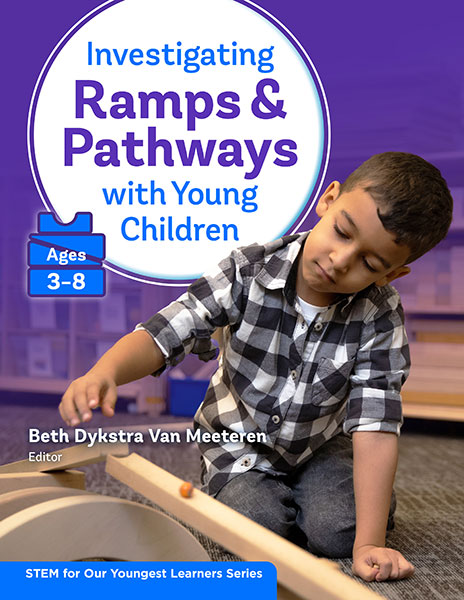Professors: Request an Exam Copy
Print copies available for US orders only. For orders outside the US, see our international distributors.
Edited by: Beth Dykstra Van Meeteren
Publication Date: December 23, 2022
Pages: 208
Series: STEM for Our Youngest Learners Series

Children are intrigued by moving objects, even more so when they can engineer the movement. This volume in the STEM for Our Youngest Learners Series uses Ramps and Pathways as a context to provide children ages 3–8 with opportunities to engage in STEM every day. Ramps and Pathways is a meaningful and fun way for children to develop engineering habits of mind as they explore concepts in force and motion, properties of objects, and how an object's properties affect its movement. In the process, children develop spatial thinking that is essential for future careers in STEM. The text also offers guidance for arranging the physical, intellectual, social–emotional, and promotional environments of a classroom to embrace the natural integration of literacy learning. Each volume in this series includes guidance for forming partnerships with families and administrators that support STEM learning, vignettes showing educators and children engaging in inquiry learning, tips for selecting materials, modifications and accommodations for diverse learners, ways to establish adult learning communities that support professional development, and more.
Book Features:
Beth Dykstra Van Meeteren is director of the Iowa Regents' Center for Early Developmental Education and associate professor of literacy education at the University of Northern Iowa.
“ The STEM for Our Youngest Learners series is a must-have in any preschool classroom. The books bring together many voices to encourage teachers as they incorporate STEM education into their own classrooms… The books have a very reader-friendly format, and every chapter gives clear, concise direction not only about the activity but how that activity aligns with Next Generation Science Standards.”
—Science and Children
Praise for the STEM for Our Youngest Learners Series
“This series is an important addition to a very limited field of guides for teaching STEM to young learners. While activity books abound, this series, with its basis in constructivism and its use of an inquiry-based teaching model, guides teachers in creating in-depth experiences for children to examine the natural world while building their critical thinking skills and deepening their curiosity about and interest in the world around them.”
—Karen Worth, consultant in science education, early childhood and elementary years
Professors: Request an Exam Copy
Print copies available for US orders only. For orders outside the US, see our international distributors.